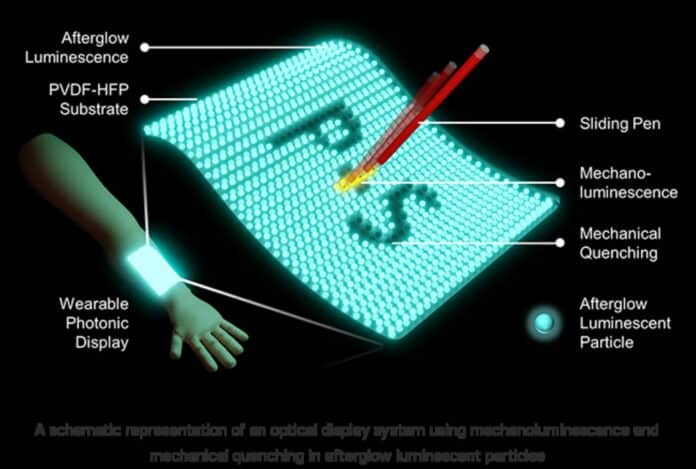The optical characteristics of afterglow luminous particles (ALPs) in mechanical quenching (MQ) and mechanoluminescence (ML) have garnered significant interest for a variety of technological uses. However, a clearer explanation of these unusual events is required for the particular photonic application.
Recently, scientists at Pohang University of Science and Technology (POSTECH) devised an optical display technology with ALPs that enables the writing and erasure of messages underwater. This discovery revealed a distinctive optical phenomenon in ALPs, and they also created a device to implement this phenomenon.
ALPs can absorb energy and release it gradually, thereby displaying mechanoluminescence when subjected to external physical pressure and undergoing mechanical quenching, where the emitted light fades away.
In this study, scientists delved into the impact of trapped electrons and recharging on both mechanoluminescence and quenching.
They identified the underlying mechanisms for both events. Building on this knowledge, they paired ALPs with an extremely thin polymeric material (PVDF-HFP) that could realize both phenomena concurrently. This combination led to the development of a skin-attachable optical display patch.
With just a little finger pressure, the display patch could write information. When exposed to UV radiation, the patch resets to a blank state, much like when you use an eraser to remove text from a notebook. Furthermore, the touchscreen display demonstrates resistance to moisture and continues to function even after being submerged in water for extended periods of time.
Professor Sei Kwang Hahn, who led the research, stated, “It could serve as a communication tool in situations with limited communication options, such as underwater environments characterized by low light or high humidity. It would be also used for wearable photonic biosensors and phototherapy systems in extreme environments.”
Journal Reference:
- Seong-Jong Kim, Fan Yang et al. Mechanoluminescence and Mechanical Quenching of Afterglow Luminescent Particles for Wearable Photonic Display. Advanced Functional Materials. DOI: 10.1002/adfm.202314861
